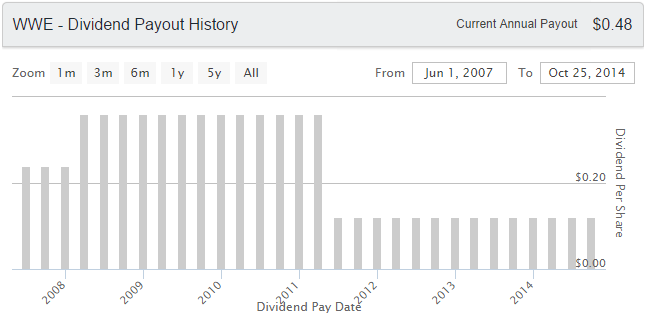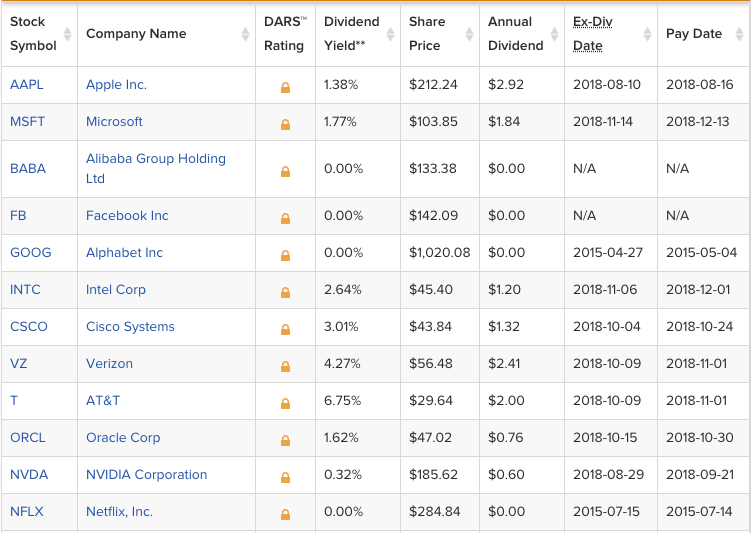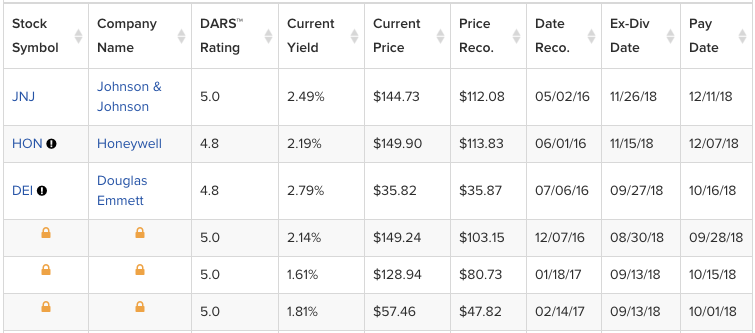While dividend investing is a great way for investors to get a steady stream of return through income from their stock purchases, there are still certain signs that need to be examined to make sure an investment is a smart one. One important metric to measure the reliability of a dividend stock is the dividend payout ratio.
Payout Ratio Basics
The dividend payout ratio is used to examine if a company’s earnings can support the current dividend payment amount. The statistic is simple to compute, calculated by taking the dividend and dividing it by the company’s earnings per share.
Dividend Payout Ratio = Dividend per share (DPS) / Earnings per share (EPS)
If a company has a dividend payout ratio over 100% then that means that the company is paying out more to its shareholders than earnings coming in. This is typically not a good recipe for the company’s financial health; it can be a sign that the dividend payment will be cut in the future.
Be sure to also read about How to Spot a Dividend Value Trap.
One example of the instability of a dividend payout ratio over 100% comes from professional wrestling and entertainment company World Wrestling Entertainment (WWE ). Consider the chart below, which illustrates the company’s distribution history over time:

After a consistent period of having a dividend payout ratio over 100%, WWE had to cut its quarterly dividend payment from 36 cents per share to 12 cents per share in June of 2011. The company’s financials could not justify a dividend payout ratio of about 182% at the time when its future financial outlook was bleak.
Be sure to also read A Dividend Investor’s Guide to Measuring Risk.
Always Look Ahead, Never Behind
However, to determine the viability of the dividend payment, a company looks towards future earnings, not previous ones. Since companies look at future earnings expectations to determine their dividend policy, shouldn’t investors do the same?
This forward-looking strategy can make a backward-looking dividend payout ratio seem bloated, but in actuality the financial situation will be able to support the payout level without a problem. For example, telecommunications giant AT&T (T ) boasted an annual dividend payment of about $1.76 in 2012.
However, its 2011 earnings (the last reported full year at the time) were 77 cents per share. That means that the firm had a backward-looking dividend payout ratio of around 230%. This figure is obviously alarming at first. But if the earnings outlook for AT&T in fiscal year 2012 (approx. $2.39 per share) and 2013 (approx. $2.59 per share) are examined more closely, it becomes apparent that AT&T’s dividend is actually sustainable.
Consider AT&T’s dividend history below:

As the above chart reveals, AT&T has an impressive history of dividend payouts, increasing its annual dividend for 29 years in a row. Clearly, investors need to examine more than just the surface of these key statistics to determine how viable an investment may be.
See also the Top 10 Myths About Dividend Investing.
Not All Ratios Are Created Equal
As the above examples depict, the dividend payout ratio will be different for different firms in different industries with different financial situations. Investors need to realize that not all companies’ dividend payout ratios should be examined the same. Typically, older and more mature companies will tend to have a higher payout ratio as they have the financial capabilities to payout more to shareholders. Also, some companies, especially new ones, will prefer to have a lower dividend payout ratio in order to retain earnings that can be utilized for future company growth.
The more mature, established companies do not focus on such growth, so they will be more willing to pay the higher dividends. Investor need to know whether a potential investment is a growth stock or a dividend stock in order to properly comprehend its dividend payout ratio.
There are even times when investors should ignore dividend payout ratios all together, as certain companies will always have unusually high numbers. The payout ratio should not be applied to MLPs, Trusts, or REITs as they have a unique financial structure and are obligated to pay out most of their earnings as dividends. Firms under these classifications will always pay a high percentage of their earnings towards dividends.
It is up to the investor to decide what kind of dividend payout ratio is most attractive to specific investing needs. A dividend-focused investor may need steady cash income for living expenses, which means the investor’s investing priorities are less concerned with capital gains. This investor will be more focused on a high dividend payout ratio. Another type of investor will be more focused on capital gains, so this investor will look for a lower dividend payout ratio with an outlook towards growth.
The Dividend Stock Screener is an advanced search tool that allows investors to screen dividend-paying stocks to match their investment objectives. The universe of stocks can be filtered by several distinct criteria such as Sector, Industry, Market Cap, five metrics of our proprietary Dividend Advantage Rating System – DARS™, Annual Dividend Payout, Ex-Dividend Date and Dividend Payout Frequency.
Check out the below screenshot of sample results of our Screener tool generated for Technology Sector stocks with a market cap of more than $10 billion and sorted by market cap.

Management Evaluation
A strong, sustainable dividend payout ratio can be synonymous with good management. It shows to prospective investors and shareholders that the company is making sound financial decisions. It is one of the reasons why companies are stubborn to cut their dividend, as doing so signals that management has not been able to run the company efficiently. As a result, investors can lose faith in the company, sinking the price of the stock even further.
This could lead to a vicious cycle of stock declines that a company might not be able to escape from. Be sure to learn more about the Biggest Dividend Stock Disasters of All Time.
Cutting the dividend also puts a blemish on the company’s dividend track record, which means that dividend investors will be reluctant to invest in the company in the future. This is often why companies allow their payout ratio to rise; they are reluctant to cut the dividend until they stubbornly do it at last possible moment, possibly causing more damage than good if they did it earlier.
To view Dividend.com’s Highly Recommended list of stocks, be sure to check out our Best Dividend Stocks List. The list features Dividend.com’s top-rated dividend stocks, geared toward traditional long-term, buy-and-hold investors. All stocks on this list are rated using Dividend.com’s proprietary Dividend Advantage Rating System – DARS™. Refer the below screenshot of our partial list, which gets updated each week.

The Bottom Line
Simply throwing money into stocks with high yields or high payouts may not always be the right answer to an investor’s goals. Dividend payout ratio is a great statistic to show whether the potential investment can keep paying the lucrative distribution now and for the years to come. Examining this metric can help shed insights about future returns through both dividend payments and capital appreciation.
Also, check out Dividend.com’s tools. Our tools help investors make sound investment decisions. Investors can narrow down their stock investment search by screening, comparing and analyzing the vast universe of dividend-paying stocks.





